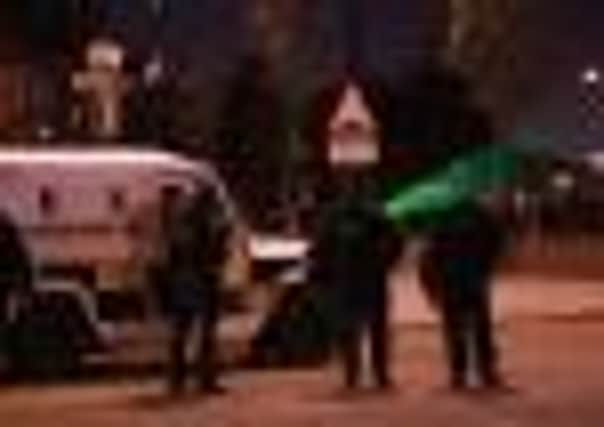George Kerevan: The future is not orange, but neither is it green


FORGET cosmetic reshuffles, the Paralympics and the usual preoccupations of an insular London media. Let’s look at what’s going on this summer across the Irish Sea in “John Bull’s other island”.
In Belfast, the row continued over Asda allowing flowers and messages of condolence to be fixed to the gates of its Shore Road supermarket in memory of William Hunter. He was formerly a notorious loyalist gunman (turned checkout worker at Asda), who committed suicide last month by burning himself to death. Hunter was depressed, but whether from a guilty conscience, or from despair at the terminal economic and social decline of the Protestant working class in Northern Ireland is impossible to tell.
Advertisement
Hide AdAdvertisement
Hide AdThere were also several nights of rioting in Belfast, with buses hijacked and dozens of policemen injured. The violence came largely from loyalists ostensibly protesting at a (legal) Republican parade last Sunday. But Belfast had been tense since loyalists last week defied a ban on their bands playing sectarian songs as they filed past a Catholic church. Riots in Belfast are rarely spontaneous, and this week’s events may well have been orchestrated by the UVF, a loyalist paramilitary group which remains active.
This month hardcore loyalists have “celebrated” the 100th anniversary of the signing of the 1912 Ulster Covenant against Irish Home Rule. There are fears of further rioting come 29 September when 20,000 loyalists with 100 bands are expected to march through Belfast city centre.
Northern Ireland remains a deeply divided community. Some 90 per cent of social housing is segregated by religion and only 6.5 per cent of children attend integrated schools. The two communities vote for different parties. The Democratic Unionist Party got only 2 per cent of its transfer votes from Catholics, while Sinn Fein got 2.2 per cent from Protestants.
Yet when all is said, the tectonic plates of Ulster politics are shifting, though not quite in the way anyone expected when the Troubles died down. The riots showed there are still seething emotions lying underneath the surface that complacent Brits would be foolish to ignore. But William Hunter’s pitiful end says more about the eclipse of Northern working class Unionism as a real force, than impressionable teenagers throwing fireworks at policemen.
What is happening in Northern Ireland is that the traditional loyalist political bloc has transmuted socially, and splintered politically. The militantly Unionist petty bourgeoisie – farmers and small businessmen – are fast disappearing for economic reasons. So is the Protestant working class. In their place a new Protestant professional middle class, while opposed to Irish unity, is nevertheless prepared – hesitantly but inevitably – to share power with a modern Catholic community that prefers shopping to flying the Tricolour. The Protestant churches, filled with the new middle class, have started to cut their links with Orangism.
This new Northern Ireland is increasingly different from the old Unionist bantustan. Some 60 per cent of entrants to higher education are Catholic. The active workforce is increasing female and Catholic. Which may explain the frustrations of loyalist, working-class teenagers with no qualifications and no jobs.
Protestants have always feared that when the Catholic population becomes a majority in the North, Irish unity will follow. Yet support for unity is marginally lower among 18-24 year-olds than in the population as a whole. Which suggests there is no automatic demographic thrust towards Irish unity in this new North.
In fact, sentiment is moving in the opposite direction. A poll in June conducted by the Belfast Telegraph showed only 7 per cent of people in the North would vote to join the Republic if a referendum was held tomorrow, though another 25 per cent would vote yes in 20 years time (presumably after the South’s economy recovers). Predictably, 88 per cent of Protestants are opposed to Irish unity – ever. More surprisingly, support for unification has fallen among Catholics.
Advertisement
Hide AdAdvertisement
Hide AdHas the Good Friday Agreement killed Irish unity? No – the Irish have merely altered the question. In Northern Ireland, as in Scotland, the inevitable unravelling of the UK is not going to proceed according to a 19th century prescription based on flags and customs posts. But a break-up of the old centralist UK, run from London, is definitely on the cards.
For proof, look at how folk in Northern Ireland define themselves. Another Belfast Telegraph poll finds 42 per cent of people in the North describe themselves as Irish, only 39 per cent think they are British, and a significant 18 per cent now see themselves as primarily Northern Irish. In other words, 60 per cent of the province has already repudiated Britishness as its core identity – the corresponding figure in Scotland is only marginally higher at 65 per cent.
As a result, the new North is evolving into a separate state with its own economic and social agenda distinct from the UK. And despite this week’s riots, moderate loyalists and Irish nationalists are combining successfully to gain more powers for the Northern Ireland Assembly. New tax powers have already been devolved, including passenger duty on long-haul flights in and out of Northern Ireland. If you’re flying from Glasgow to America, George Osborne will charge a family of four an outrageous £260 in tax. If you fly from Ireland, Stormont charges £48.
The outcome of this process is likely to be a new confederal arrangement between England, Scotland, and Wales, sharing a common currency and defence, but sovereign in most other matters. Northern Ireland is more likely to evolve links that also include the Republic, especially on economic policy and taxation.
It has become the norm for those opposed to Scottish independence to deride the SNP’s talk of a “social union” between the peoples of these islands. But developments in Northern Ireland are pointing in the SNP’s proposed direction.